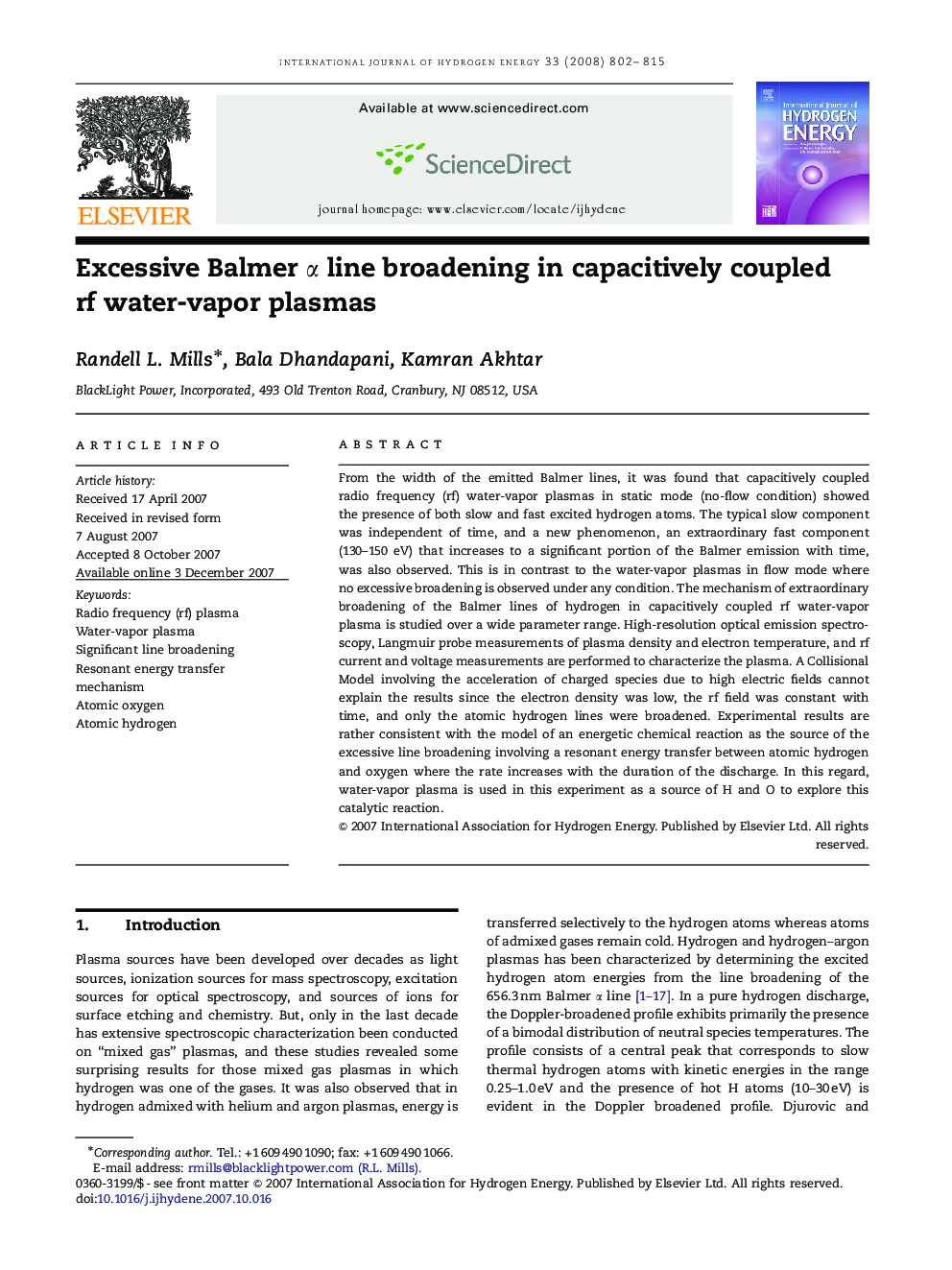| Article ID | Journal | Published Year | Pages | File Type |
|---|---|---|---|---|
| 1280011 | International Journal of Hydrogen Energy | 2008 | 14 Pages |
From the width of the emitted Balmer lines, it was found that capacitively coupled radio frequency (rf) water-vapor plasmas in static mode (no-flow condition) showed the presence of both slow and fast excited hydrogen atoms. The typical slow component was independent of time, and a new phenomenon, an extraordinary fast component (130–150 eV) that increases to a significant portion of the Balmer emission with time, was also observed. This is in contrast to the water-vapor plasmas in flow mode where no excessive broadening is observed under any condition. The mechanism of extraordinary broadening of the Balmer lines of hydrogen in capacitively coupled rf water-vapor plasma is studied over a wide parameter range. High-resolution optical emission spectroscopy, Langmuir probe measurements of plasma density and electron temperature, and rf current and voltage measurements are performed to characterize the plasma. A Collisional Model involving the acceleration of charged species due to high electric fields cannot explain the results since the electron density was low, the rf field was constant with time, and only the atomic hydrogen lines were broadened. Experimental results are rather consistent with the model of an energetic chemical reaction as the source of the excessive line broadening involving a resonant energy transfer between atomic hydrogen and oxygen where the rate increases with the duration of the discharge. In this regard, water-vapor plasma is used in this experiment as a source of H and O to explore this catalytic reaction.
